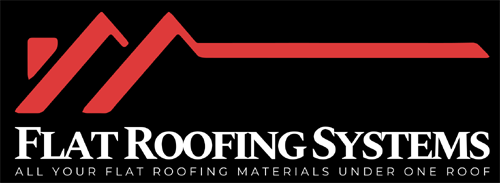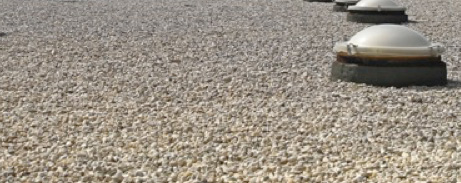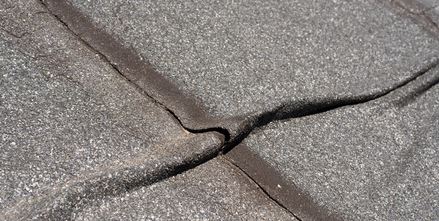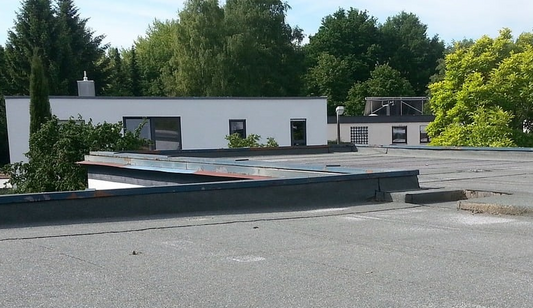You shouldn't pressure wash your PVC roof membrane as it'll likely cause serious damage. High-pressure water above 1,500 psi can puncture the membrane, create tears, and separate seams, leading to costly water infiltration problems. Most manufacturers immediately void warranties when pressure washing is performed, leaving you responsible for expensive repairs. Instead, use manual cleaning with soft brushes and PVC-specific chemical cleaners. Understanding proper maintenance techniques will help protect your investment and extend your roof's lifespan.
Key Points
- Pressure washing PVC roof membranes can cause punctures, tears, and seam separations if pressure exceeds 1,500 psi.
- High-pressure water can void manufacturer warranties immediately and lead to costly repairs or complete roof replacement.
- Safe pressure washing requires maximum 1,500 psi, 30-degree spray tip, and 12-inch distance from roof surface.
- Pressure washing can strip protective coatings and create structural problems that may not be immediately visible.
- Manual cleaning with soft brushes and PVC-specific chemical cleaners are safer alternatives to pressure washing.
Understanding the Risks of Pressure Washing PVC Roof Membranes
While pressure washing might seem like an effective way to clean your PVC roof membrane, this approach carries significant risks that can compromise your roof's structural integrity.
High-pressure settings above 1,500 psi can puncture membranes, create tears, or cause seam separation. These damages lead to costly maintenance issues and potential water infiltration through compromised flashings and seams.
Improper pressure washing techniques pose additional threats to your roof's longevity. Water forced into vulnerable areas can create structural problems that weren't previously present.
Many manufacturers void warranties when PVC roof membranes are pressure washed, leaving you responsible for expensive repairs.
Before attempting this cleaning method, consider professional services that understand proper technique requirements. They'll maintain appropriate distances and direct water flow correctly to preserve your roof integrity.
How High-Pressure Water Can Damage Your PVC Roofing System
High-pressure water creates a destructive force that can overwhelm your PVC roofing system's structural limits.
When you exceed 1,500 psi during pressure washing, you're risking punctures, tears, and seam separation that compromise your roof's integrity. The forceful water penetrates seams and flashings, creating pathways for leaks that lead to structural damage over time.
Your PVC roofing membranes weren't designed to withstand excessive water pressure.
The cleaning process strips away protective coatings that shield against UV rays and moisture, reducing your roof's lifespan considerably. This damage extends beyond immediate visible harm—you're potentially voiding manufacturer warranties, leaving you responsible for expensive repairs or complete replacement costs that could've been avoided with proper cleaning techniques.
Warranty Concerns When Using Pressure Washers on PVC Roofs
Before you start pressure washing your PVC roof, you need to understand that most manufacturers explicitly prohibit this cleaning method in their warranty agreements.
Using high-pressure water can immediately void your warranty coverage, leaving you financially responsible for any future repairs or replacements.
Warranty concerns arise because pressure washing creates artificial stress on roofing materials, potentially causing punctures, tears, or seam separations that manufacturers won't cover.
Even if damage isn't immediately visible, the stress from high-pressure cleaning can lead to problems later.
You should carefully review your specific warranty terms before considering any cleaning approach.
Instead of risking warranty violations, explore alternative cleaning methods approved by your manufacturer or consult professional cleaning services that specialize in PVC roof maintenance.
Safe Pressure Settings and Equipment for PVC Roof Cleaning
If you decide to proceed with pressure washing despite warranty risks, proper equipment settings become your primary defense against membrane damage. Your pressure washer must operate at low pressure settings—never exceeding 1,500 psi for PVC roof cleaning. This preventative maintenance approach protects against costly roof damage while ensuring effective cleaning.
Essential equipment specifications include:
- 30-degree spray tip maximum for gentle water application
- 12-inch distance between nozzle and roof surface
- Downward water flow following roof slope to prevent seam infiltration
Professional roofing contractors often recommend combining reduced pressure with appropriate cleaning solutions for best results.
Alternative Cleaning Methods for PVC Commercial Roofs
While pressure washing poses significant risks to PVC membranes, several safer cleaning alternatives can maintain your commercial roof's performance without compromising warranty coverage.
Manual roof cleaning using soft-bristled brushes or brooms effectively removes debris and environmental contaminants without damaging the membrane. You'll achieve better results by implementing regular gentle cleaning routines that eliminate the need for aggressive techniques.
Chemical cleaners specifically formulated for PVC roofs break down stubborn contaminants safely. Consult with professional roofing manufacturers to understand recommended cleaning practices that preserve warranty terms and optimize performance.
Regular inspections and debris removal create a consistent maintenance routine that extends your roofing systems' lifespan. These methods protect your investment while ensuring your PVC roofs remain functional and avoid damaging the membrane through harsh cleaning approaches.
Professional Maintenance Tips for Long-Lasting PVC Roofing
Since PVC roofing represents a significant investment in your commercial property, implementing professional maintenance strategies guarantees you'll maximize its lifespan and performance.
Professional contractors understand how to protect roof membranes while delivering thorough cleaning results.
Expert PVC roof maintenance involves three critical approaches:
- Regular inspections - Professionals identify potential damage before it becomes costly
- Soft washing techniques - Biodegradable cleaners preserve membrane integrity without harsh chemicals
- Preventive maintenance - Trimming branches and debris removal reduces aggressive cleaning needs
Annual professional cleaning ensures your roof receives proper care without risk of damage.
Experienced contractors know which cleaning methods work best for PVC roof maintenance, avoiding high-pressure techniques that can puncture membranes.
This professional approach protects your investment while maintaining peak roof performance.
Rounding Up
You can pressure wash your PVC roof membrane, but you'll need to use extreme caution. Keep pressure settings below 1,500 PSI and maintain proper distance to avoid punctures or seam damage. Don't use hot water or harsh chemicals that'll void your warranty. Consider gentler alternatives like soft washing or manual cleaning first. When in doubt, you're better off hiring professionals who understand PVC roofing systems and won't compromise your roof's integrity or manufacturer coverage.




